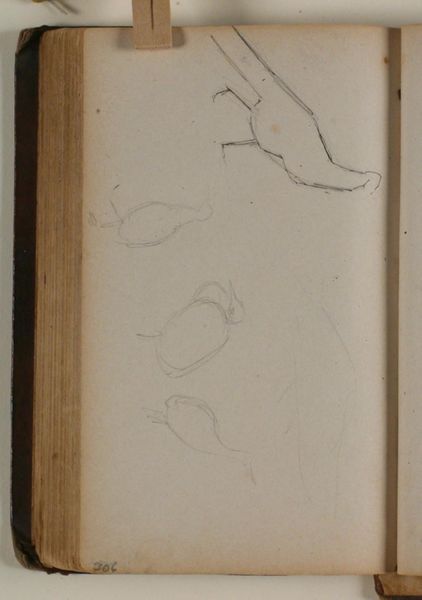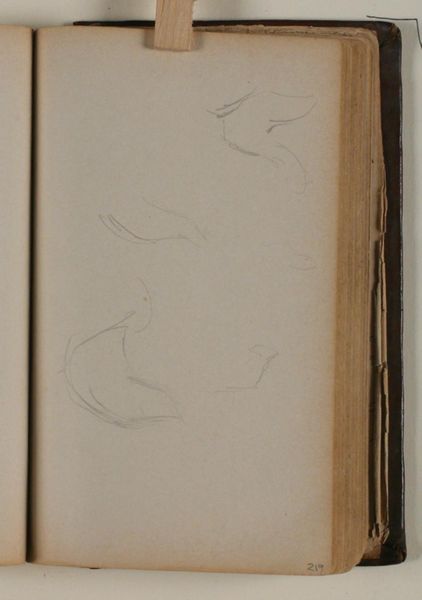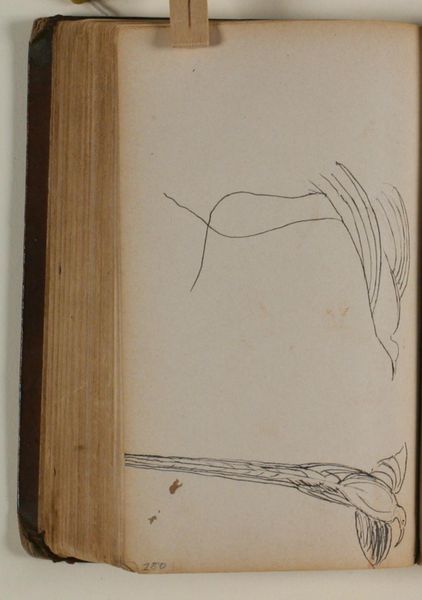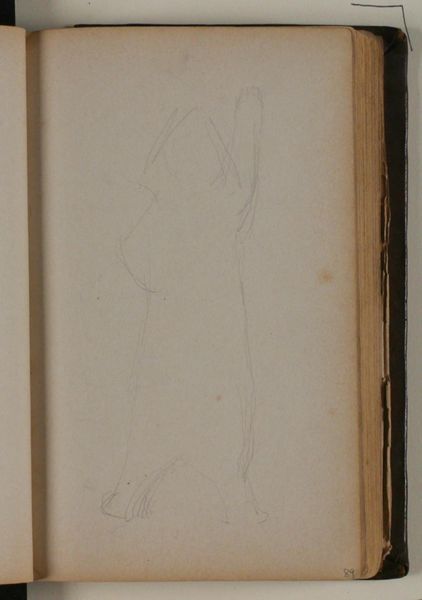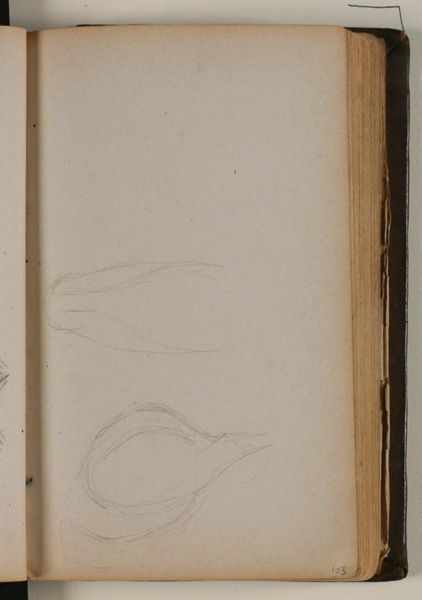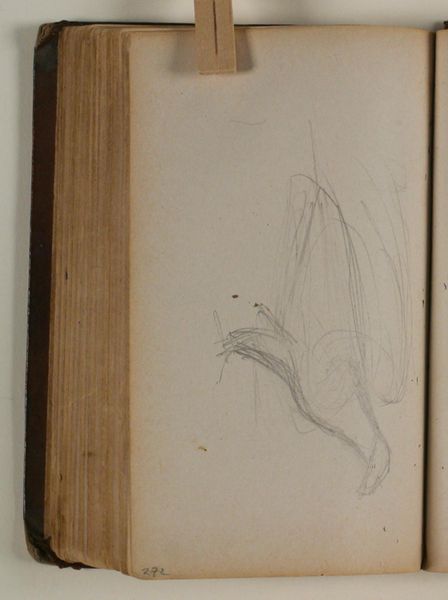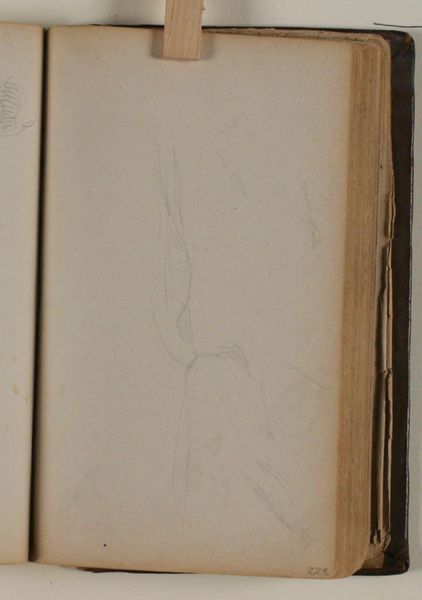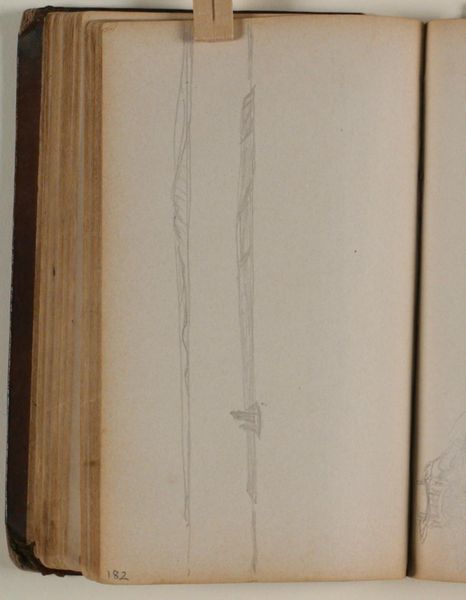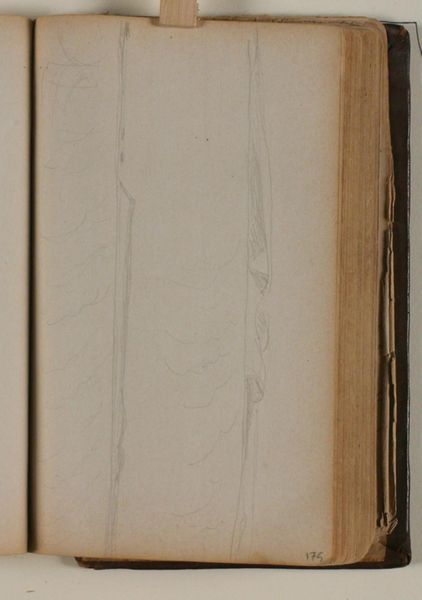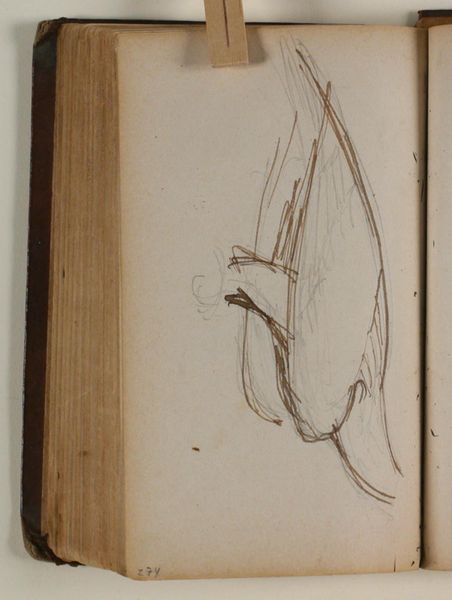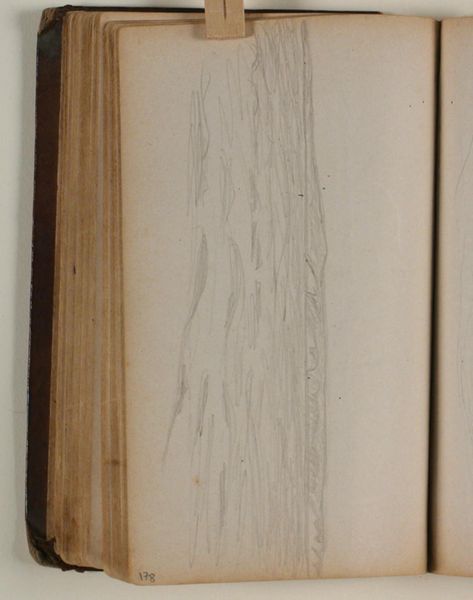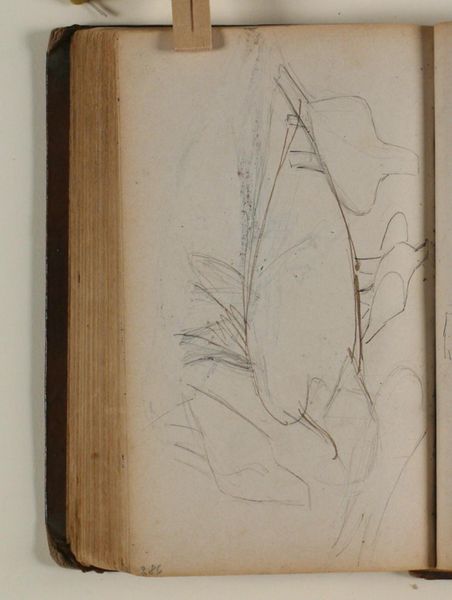
drawing, pencil
#
portrait
#
drawing
#
animal
#
figuration
#
form
#
pencil
#
realism
Curator: Here we have "Studie af isbjørn," or "Study of a Polar Bear," a pencil drawing by Niels Larsen Stevns, created sometime between 1864 and 1941. It resides here at the SMK, Statens Museum for Kunst. Editor: My first thought is just how vulnerable it looks, despite being such a powerful creature. There's an almost tentative quality to the line work. Curator: Absolutely. Focusing on the physical process, it’s clearly a preliminary sketch. You can see the tentative lines the artist made searching for the form of the bear, especially around the legs. The paper itself looks aged, part of a sketchbook, which suggests this wasn't intended as a finished piece. It's interesting to think about the economics of art-making at the time and the resources available. Sketchbooks were essential tools, a kind of portable laboratory for artists. Editor: That tentativeness connects for me to a broader narrative about humanity’s relationship with the Arctic. The polar bear has become a symbol of climate change. Larsen Stevns may not have had that specific environmental context, but the image still speaks to that precarity—the vulnerability of even the most apex predator in the face of environmental shifts brought on by global socio-political and economic behaviors. Curator: That’s a potent reading. Thinking about the bear itself, note the simplified form. Stevns has reduced it to essential lines, almost diagrams. This reflects a concern with capturing form rather than a highly detailed, naturalistic rendering, doesn’t it? Editor: Yes, and that simplification speaks to the representation of animals—and nature itself—within the frameworks of human understanding and control. What does it mean to strip something of its complexity in the service of "understanding"? It opens a space for discussing the ethics of representation and the potential for erasure. Curator: I think it also raises important questions about artistic labour. The accessibility of the sketch—its very rawness—democratises the process of art, showing us the labour and the effort involved in image making, rather than only presenting the finished commodity. Editor: Right, seeing that artistic process laid bare makes it less about idolizing the final product, and more about confronting the structures that have brought us to our present moment. A present moment of both beauty and danger, echoed perfectly here. Curator: So even this quick sketch offers so much. Editor: Absolutely. Layers upon layers.
Comments
No comments
Be the first to comment and join the conversation on the ultimate creative platform.
